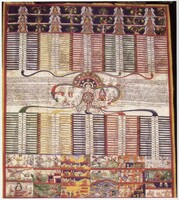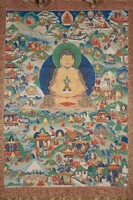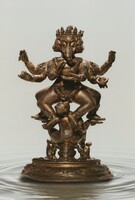Didactic Art: Art as Instruction

Didactic Art is art created as visual compositions, generally paintings, depicting information and knowledge often in sequential order for the purposes of teaching and instruction. In some cases the composition will have both visual information and textual explanation side by side.
The most well known example of didactic art are the ever present Wheel of Life paintings and murals. Other examples are the Meditation Instructions for Calm Abiding and the Bon Dzogchen Instructions of which there are several known examples (a painting, a mural, and an illuminated manuscript).
Three Main Types:
- Wheel of Life Paintings
- Meditation Instructions
- Bon Dzogchen Instructions



















